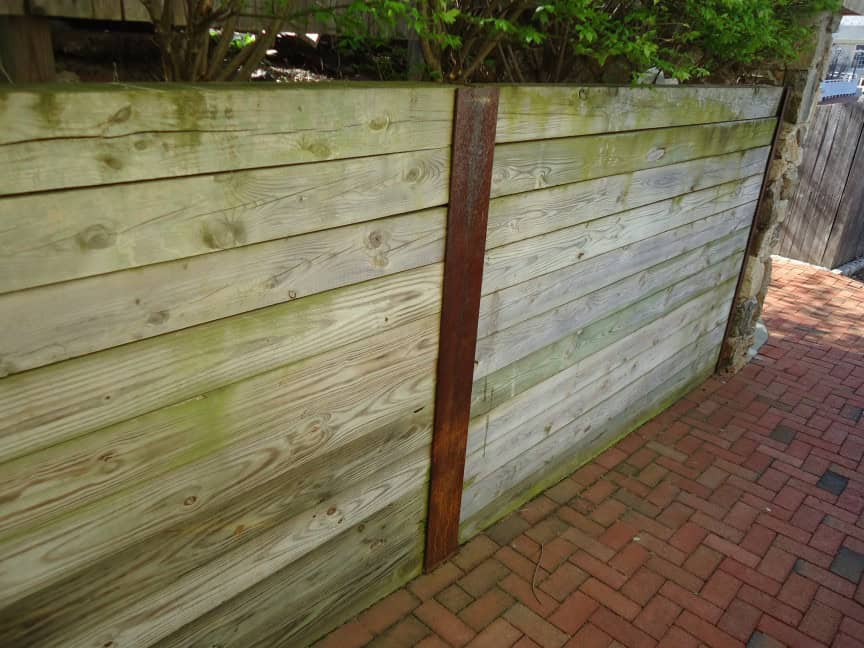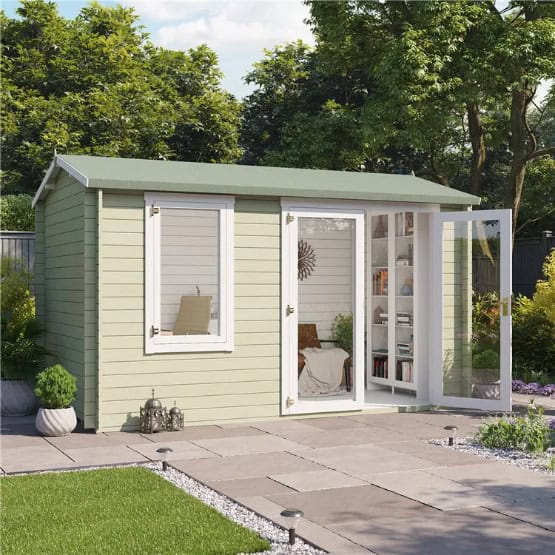Jump to:
Pressure treated wood, being pest-resistant, anti-moisture, and low-maintenance, helps toughen the timber. Combining all these qualities makes it weatherproof and extends its lifespan. Now, how exposed can untreated wood get, and with treatment, how long does it last? That’s what we’ll find out in this guide!
The Vulnerability of Untreated Wood
Wood is a fantastic building material for many construction and home projects such as garden sheds. These include building a garden room, a deck, railings, and planters, to name a few. Its strength-to-weight ratio is greater than most steel types, but it can be vulnerable when left bare and untreated.
Outdoor elements and harsh weather conditions can take a toll on wood, and this is just the start of many issues that may arise. For one, protection against moisture, pests, and UV rays is lacking. Wood absorbs water, which can cause rot and mould. Insects like termites can freely munch on it and leave damage. UV rays from the sun can fade and weaken the wood over time. Thus, untreated wood often has a shorter lifespan compared to treated wood.
The Strength of Pressure Treated Wood

(Image Credit: Wikimedia Commons)
Pressure treatment is a high-pressure process that infuses the wood with chemical preservatives. This makes the timber resistant to insect damage, moisture, and rot.
The greenish tint of a pressure-treated summerhouse helps repel pests. This colour comes from copper compounds like copper azole and DCOI, which act as fungicides and insecticides. With this treatment, you won’t have to worry about pests causing serious damage.
Alkaline Copper Quaternary (ACQ) preservatives are another compound that protects wood from decay. It’s water-based, which helps improve the wood structure’s water resistance. In the context of a pressure treated shed, for instance, condensation and decay won’t be an issue.
Moreover, pressure treated wood requires less care and maintenance than untreated wood. In garden buildings, pressure treated summer houses come with a 15-year protective guarantee against rot. They won’t need re-coating with a preservative in that period, saving you time and effort in return!
Take this BillyOh Bella Tongue and Groove Pent Summerhouse, for instance. It comes pressure-treated with a 15-year guarantee as standard. This unit is constructed using durable Tongue & Groove (T&G) cladding, which makes it a weatherproof structure. It’s the perfect retreat to enjoy those summer days with friends and family!
How Long Can You Expect Pressure-Treated Wood to Last?

Pressure treated wood can last anywhere from 10 to 40 years when properly cared for. Keep in mind, though, that this can depend on most manufacturers’ guarantees. Garden Buildings Direct, for one, offers a 10 to 15-year anti-rot guarantee for most of the units, including pressure treated log cabins.
Several factors also affect how long the pressure treated wood will last, such as:
- Maintenance: Even pressure treated wood needs a bit of TLC to extend its lifespan. This can be as simple as checking any signs of wear or damage or applying a water-repellent sealant every few years for added protection.
- Wood type: Not all wood can absorb the pressure-treatment chemicals. In this case, pine, cedar, Douglas fir, and hem-fir are your best options. Take note ot these timber types when shopping for a garden room or deck framing material.
Round-up
So, is pressure treated wood worth it? Yes, and it’s way better than its untreated counterpart! Although it may cost more upfront when it comes to garden buildings, it will save you more in the long run. To learn more, you can read this guide next: The Benefits of Pressure Treated Summerhouse
Speaking of pressure-treated garden rooms, check out Garden Buildings Direct today for a wide range of options!





